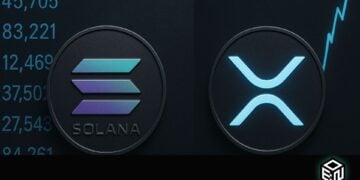The Reserve Bank of India launched its digital Rupee pilot for the wholesale segment on the 1st of November this year after it was announced in February by Finance Minister Nirmal Sitharaman in parliament during her 2022 union budget speech.
The Economics Times reported that it is also one of the first central banks to launch a wholesale CBDC pilot.
The nine banks that participated in the pilot project include; State Bank of India, Bank of Baroda, Union Bank of India, HDFC Bank, ICICI Bank, Kotak Mahindra Bank, Yes Bank, IDFC First Bank, and HSBC.
In a statement by The Economic Times, the RBI explained that the use of e-W “is expected to make the inter-bank market more efficient.”
Regarding the wholesale CBDC pilot, Anita Mishra, MD of HSBC India, said, “the aim is to ensure the operational part is fully functional before going deeper into other use cases and Distributed Ledger Technology (DLT), all of which will come in good time.”
The RBD first released a concept note on the 7th of October to provide awareness about CBDc and educate citizens on the features of the digital rupees. The wholesale digital Rupee’s purpose will be to settle secondary market transactions in government securities.
The first pilot for the digital rupee retail segment will be launched in a month.
CBDC (E-Rupee); Not A Cryptocurrency
While cryptocurrencies have quickly become the most common digital currency, the e-rupee will not be a cryptocurrency. It is a digital version of the sovereign currency, the Rupee.
While the underlying technology mirrors how crypto works, there are critical differences between the CBDC and Bitcoin.
For one, the digital Rupee will be issued and controlled by the RBI, and users will not be able to mine the currency like BTC. It will also be on par with the Rupee (in every way) such that holding the e-rupee will be equivalent to having the physical currency.
There will be two versions of the digital Rupee- the wholesale (CBDC-W) launched yesterday and the retail (CBDC-R). The retail version will be available for public use through digital tokens, in that users will have public and private keys to receive and send money.
Again, unlike in the case of crypto, where transactions can be traced but users not identified, the RBI has proposed only partial anonymity to users. Small transactions can be completed without the parties’ identities being revealed, but not for larger ones.
It also has no interest in users, which is why many invest in cryptocurrencies. This is due to the RBI’s worry that adding interest incentives might make people more inclined to invest in CBDC and leave the lenders out.
The central bank has clarified that the “CBDC is aimed to complement, rather than replace, current forms of money and is envisaged to provide an additional payment avenue to users, not replace the existing payment systems.”
The Difference Between The Wholesale and Retail Digital Rupee
As explained, the RBI has conceptualized two types of digital rupees: Wholesale and Retail.
The wholesale (CBDC-W) is for government purposes, primarily utilized by financial institutions involved in interbank transactions such as cross-currency payments and securities settlements. It allows them to make payments safer, quicker, and more efficient.
Individuals will mainly use retail (CBDC-R) to make direct payments and store value through the digital Rupee. It will be available for non-financial consumers, households, businesses, and other entities in the private sector.
Benefits of the E-Rupee
Among the many benefits, RBI hopes to achieve with the launch of the CBDC is a reduction in currency cost, lower settlement risks, the possibility of erasing systemic efficiency, and enabling innovation by embracing digital currency technologies.
Having a digital currency will provide a more stabilized infrastructure for money transfer, and reduce the cost incurred in producing physical cash, thus saving money and preserving the environment.
“…with the introduction of digital currency, cash usage will be replaced by it to a larger extent, resulting in the removal of the cost of printing…ultimately, it will reduce the cost involved in managing and moving money around the economy,” Archit Gupta, the founder, and CEO of ClearTax said.
Future of Digital Rupee
The pilot for the wholesale segment went off hitch-free.
The digital Rupee will not erase traditional banking, as it only improves on the digitization already employed in the banking system; so, physical and digital banking is expected to co-exist as time goes on.














